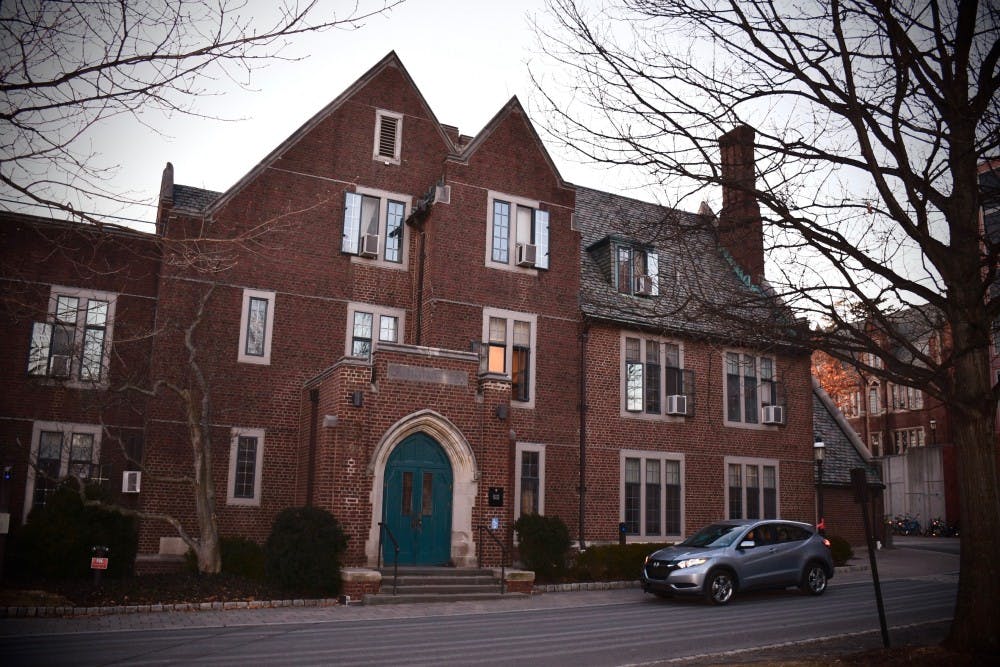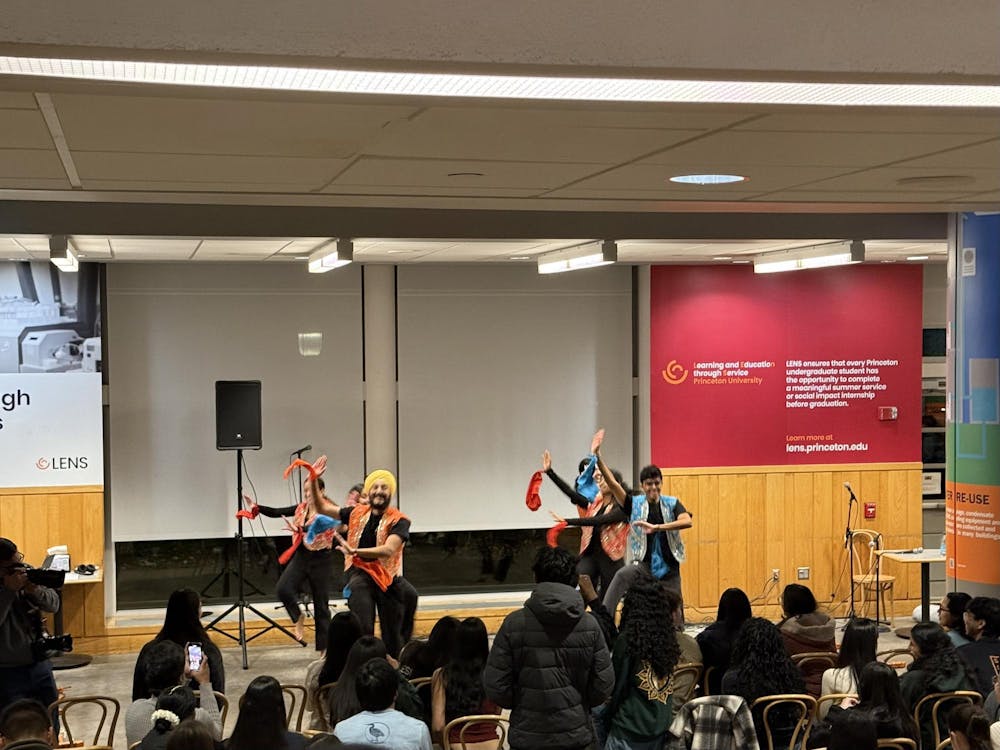Over the past week, several undergraduates have sent emails to residential college listservs calling for suggestions for what they call the “redesign” of McCosh Health Center. While not specifying in any further detail the extent of this apparent “redesign,” or describing in any detail how such feedback will be incorporated, they state that University Health Services (UHS) “is undergoing a major remodeling” and “they want student input.” As is typical for such mass emails requesting student feedback, they reassure students that the survey, whose link they provide, is “super short.”
Their particular survey poses questions such as: “Are you satisfied with the current design of UHS?” followed by a rather unattractive photograph of the front of McCosh that cuts off the building’s edges. “Should UHS have separate entrances for students who want more privacy?” beneath another evidently iPhone-taken photograph of the entrance to the infirmary, shot at a crooked angle, and, “Do you like the current blue/glassy color of McCosh?”
While I applaud these students’ efforts to engage the student body in the design process, their current attempts to solicit student feedback for the infirmary “redesign” demonstrate clear shortcomings. Other approaches, which I will briefly propose below, are likely to be far more successful.
It goes without saying that the design of healing environments like McCosh is both very important and very difficult. Indeed, a good deal of recent, and not-so-recent published architectural research has gone into considering how the design of public health spaces, including hospitals, clinics, and infirmaries, can facilitate, or conversely hinder, their ability to be truly salubrious environments. More often than not, as the Dutch architectural historian Cor Wagenaar writes in “The Architecture of Hospitals”, hospitals are designed without taking such factors into consideration, leading to “an alienating experience that separates the patient from his family, relatives and friends, [and] confronts him with a labyrinthine structure that makes him feel lost […]”
All the more reason, therefore, that the University should take great care in any redesign of McCosh, and that student feedback — since students, after all, are most often the patients — should be thoughtful and meaningful. I question whether the present attempts to solicit such feedback promise to fulfill this important goal.
Is a “super short” opinion poll a suitable format for encouraging serious and worthwhile thought from our student body? Perhaps such responses would come in the form of longer, thoughtful writing, but far more likely, I am almost certain, such an approach will yield knee-jerk complaints with little constructive criticism, as such online venues all too often encourage.
In response to this criticism, some may claim that abbreviating discussion in this way is a necessary plug to get students to take an online poll in the first place. To this, I would in turn respond by questioning whether online polls — if they do indeed require such truncated conversation — are a suitable or productive format in the first place. Are virtual questionnaires, in which students have no real incentive to provide thoughtful feedback and no opportunity to interact with their peers or participate in any direct way in the design process, truly an appropriate design methodology? Or will they inevitably yield superficial comments with little impact?
Beyond the format of the call for student feedback, I also worry that the questions these students ask reduces the design process itself to a series of cheap associations. Is whether we “like” the blue color scheme of McCosh relevant? What does it even mean if we “like” a color, anyway? And why is it important to a design that we subjectively “like” some color in the first place? Such superficial opinions and pure matters of taste, lacking in analytical precision, have little place in such an important design process.
Perhaps even more worrisome is a second, follow-up call for similar feedback about the redesign from a separate group of students, this time about “what buildings on campus currently make you feel safe and included.” These students’ survey contains a laundry list of once again evidently iPhone-taken pictures of disparate campus structures, accompanied by the same nonspecific question about “safety and inclusivity” every time. And once again, the survey concludes with a rather unattractive picture of McCosh, the edges of which are again cut off on both sides and whose front is again presented to the viewer at a crooked angle. This is hardly an adequate presentation of a work of architecture, and fails to do justice to its charming, while antiquated, brick Collegiate Gothic style.
As for the survey questions themselves, how do these students define “safety” and “inclusivity,” and why are these at all important in a McCosh infirmary redesign? Recognizing the obvious fact that these terms are inherently political, I question whether it is wise to politicize architecture in this way, fearing that framing a design discussion this way only threatens to alienate some students from the process altogether.
To reiterate, I do not object to the general idea of incorporating undergraduate feedback into the redesign of McCosh. But we clearly need a more insightful and productive methodology.
In devising a better solution, a first step would be to articulate what exactly the scope of this design project is, so that feedback can be constructive and specific. Next, since precise visuals are crucial to thinking about space, it is crucial to carry out a more complete study of the various qualities of the existing structure, with closer attention paid to capturing, through drawing or photography, the current infirmary.

Third, and perhaps most importantly, we need to hold a public gathering, in a physical space in which students can actively and publicly pose questions and provide feedback to the architect(s) chosen to redesign the McCosh. Such would be the equivalent of a community outreach initiative that architects and urban planners often hold when making an important design addition to or intervention in a community.
If I were not graduating from the University in a matter of weeks, I would, understanding the profound impact of the design of an infirmary, take it upon myself to attempt such an initiative. Nevertheless, I hope that this short piece will motivate other students, in particular those whom I commend for starting this conversation in the first place, to plan and carry out such a more architecturally-nuanced campus project.
Gabe Lipkowitz is a senior concentrator in molecular biology. He can be reached at gel@princeton.edu.








